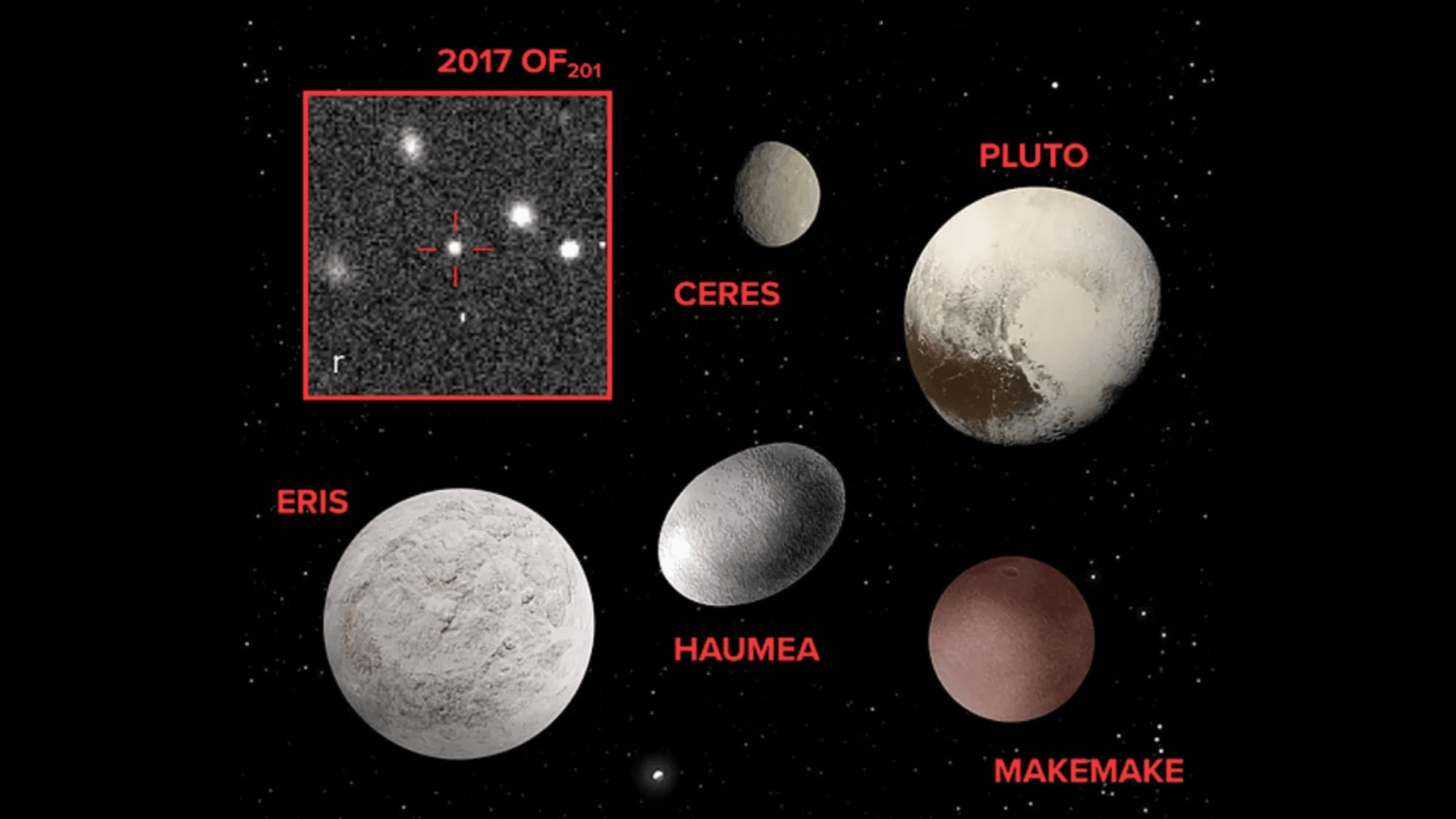Astronomers believe they’ve discovered a new dwarf planet at the edge of our Solar System. The planet was described as an “extreme ‘cousin’ of Pluto,” by Sihao Cheng, an astrophysicist at the Institute for Advanced Study’s School of Natural Sciences and leader of the team who discovered the object, in a comment on his website.
New Dwarf Planet

Currently named 2017 OF201, the discovery was announced by the International Astronomical Union’s Minor Planet Center. The space object has a 435-mile diameter, which may make it large enough to be considered a dwarf planet.
The trans-Neptunian object (TNO) has a large orbital time, with one trip around the sun taking approximately 25,000 years to complete.
“2017 OF201 spends only 1 percent of its orbital time close enough to us to be detectable. The presence of this single object suggests that there could be another hundred or so other objects with similar orbit and size; they are just too far away to be detectable now,” discovery team leader Sihao Cheng from the Institute for Advanced Study said in a statement.
“Even though advances in telescopes have enabled us to explore distant parts of the universe, there is still a great deal to discover about our own Solar System.”
The dwarf planet was discovered in an astronomical image database while searching for trans-Neptunian objects or new planets in the outer solar system. Approximately one-third the size of Pluto, researchers used 19 different astronomical database exposures captured over seven years to spot the object.
According to researchers, its extreme orbit means that the planet is only detectable approximately 1% of the time. The extreme orbit of 2017 OF201 also suggests the object “must have experienced close encounters with a giant planet, causing it to be ejected to a wide orbit,” stated Eritas Yang, a Princeton University graduate student who assisted in the research, in the study synopsis.
This discovery may also cause issues for Planet 9 theories, or a planet larger than Earth that’s expected to exist beyond Pluto’s orbit. The planet’s existence has been speculated because of how the orbits of many TNOs are organized in clusters. The orbit of 2017 OF201, however, deviates from this pattern.







